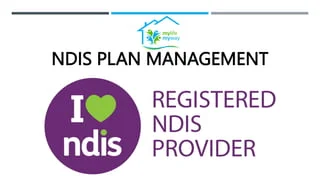The Impact of Telemedicine on Healthcare Post-Pandemic

Introduction:
The COVID-19 pandemic has brought about unprecedented changes in various sectors, including healthcare. One of the most significant transformations has been the rapid adoption and expansion of telemedicine. Telemedicine, also known as telehealth, refers to the provision of healthcare services remotely using digital information and communication technologies. This article explores the evolution of telemedicine during the pandemic and its lasting effects on healthcare delivery.
Evolution of Telemedicine During the Pandemic:
Pre-Pandemic Telemedicine:
Before the pandemic, the use of telemedicine was quite limited in most countries, held back by regulatory barriers and hesitancy from patients and providers. However, the need for social distancing and the risk of virus transmission during the pandemic necessitated a shift towards remote healthcare delivery.
Telemedicine During the Pandemic:
“The pandemic acted as a catalyst for the widespread adoption of telemedicine. Governments moved quickly to promote the use of telemedicine as COVID-19 massively disrupted in-person care. Telemedicine offered a bridge to care during the tragedy of the pandemic and provided a chance to reinvent virtual and hybrid virtual/in-person care models.” Says George from Taoist Wellness
Lasting Effects of Telemedicine on Healthcare Delivery:
Impact on Healthcare Costs:
“Telemedicine has been shown to reduce the cost of healthcare and increase efficiency through better management of chronic diseases, shared health professional staffing, reduced travel times, and fewer or shorter hospital stays. Telemedicine appointments typically cost less than in-person visits, reducing out-of-pocket costs and removing a barrier to care.” Says Tiffany Payne, Head of Content at PharmacyOnline.co.uk
Impact on Accessibility to Healthcare:
“Telemedicine improves healthcare efficiency and accessibility by reducing the need to travel for medical care. It makes it possible to use a range of communication techniques, including video, writing communication, and online translation. It has been demonstrated to enhance patient outcomes.” Says Pareen Sehat, Clinic Director of Wellbeings Counselling
Impact on Patient Satisfaction:
“Patient satisfaction with telehealth is high, according to several studies. Telehealth visits are rated highly by patients on a satisfaction scale, and technical difficulties are usually resolved quickly.” Says Dean Lee – Head of Marketing at Sealions
Impact on Healthcare Providers:
“Telemedicine providers are health care professionals who furnish services to patients through telehealth communications. They may offer different types of services, such as non urgent medical care, health and wellness, hormone imbalance, and more.” Says Anthony Mixides, Director at London Vape Company
Challenges of Telemedicine:
“Despite its benefits, telemedicine also presents several challenges. These include technological glitches when using devices, inability to physically examine people, lack of patient-doctor rapport and trust, lack of access to the necessary infrastructure, such as high-speed internet, and diagnosis hindrance due to the poor quality camera, images, or lighting.” Says Sophia Ensor, Social media executive at Centre for Surgery
Future of Telemedicine:
The future of telemedicine is promising. Virtual healthcare models and business models are evolving and proliferating, moving from purely “virtual urgent care” to a range of services enabling longitudinal virtual care, integration of telehealth with other virtual health solutions, and hybrid virtual/in-person care models. According to a report published by MarketsandMarkets, the global telehealth and telemedicine market is expected to rise at a CAGR of 26.6%, reaching $285.7 billion by 2027.
Conclusion:
In conclusion, the COVID-19 pandemic has significantly accelerated the adoption and expansion of telemedicine, bringing about lasting changes in healthcare delivery. While there are challenges to overcome, the benefits of telemedicine in terms of cost reduction, increased accessibility, patient satisfaction, and provider convenience are undeniable. As we move into the post-pandemic era, telemedicine is likely to continue playing a crucial role in healthcare delivery, shaping the future of healthcare.




